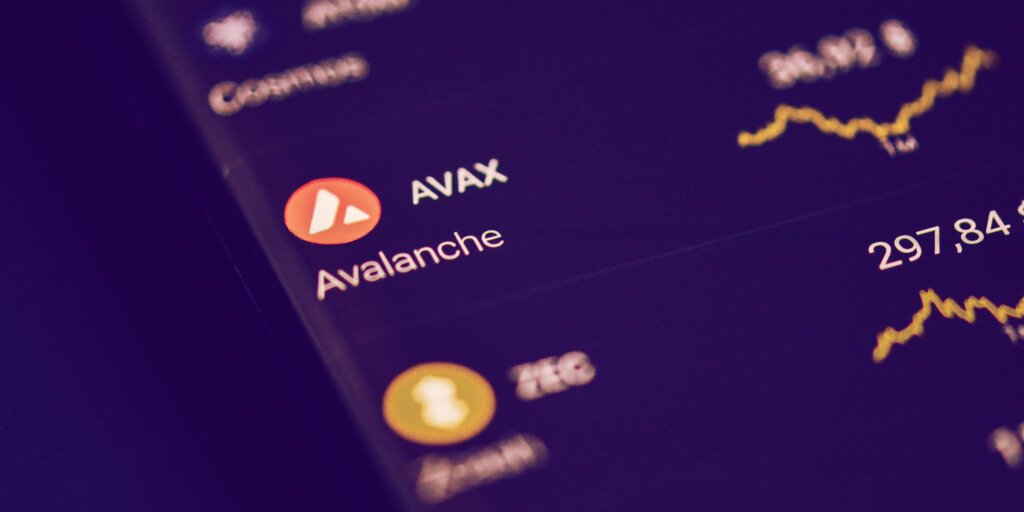Most of the world’s leading cryptocurrencies are down in the past week, including top dogs Bitcoin (down 3%) and Ethereum (down 2%), but a few managed to weather the pullback.
Avalanche’s AVAX is up an impressive 40% from last Saturday to trade at $115, while LUNA climbed 14% to $72.
“Ethereum killer” AVAX was worth just $10 less than six months ago. Since then, it has exploded in price to become the No. 9 cryptocurrency by market capitalization.
AVAX’s rally is largely down to growing institutional adoption. On December 14, financial services company Circle announced that it was bringing its USDC stablecoin to Avalanche’s blockchain.
Two days later, more big news arrived: crypto custodian BitGo said it will support AVAX. The announcement also confirmed that BitGo clients Bitstamp and Bitbuy will now be listing AVAX on their exchanges in early 2022.
LUNA’s rise has also been unhindered by wider market trends this week. LUNA’s progenitor Terra also mints stablecoins pegged to various currencies, the most successful of which is TerraUSD (UST), which is currently poised to flip DAI as the fourth biggest stablecoin by market cap.
UST’s price is pegged to the dollar through LUNA, in an ingenious mechanism where for every UST created, a dollar of LUNA has to be burned. UST’s market cap is up 40% in the last month, according to CoinGecko.
Dogecoin also had a great week despite a modest increase in value of around 3% over the last week to $0.173 cents. On Tuesday the meme coin blew up 20% after Tesla CEO Elon Musk announced that his car company will accept Dogecoin for merchandise payments.
The Market Leaders
It was a relatively slow news cycle for market leaders Bitcoin and Ethereum this week, and this was reflected in their respective price performances.
Bitcoin is down 3.2% in the last seven days to $46,820. Ethereum fared little better. The world’s second favorite currency depreciated by 2.2% over the same period. It trades at $3,947 at the time of writing.
Bitcoin is scarce. Only 21 million Bitcoins will ever be mined, which many investors have argued is tantamount to “digital gold”. This week, the amount of Bitcoins mined from its total supply hit 90%, but don’t expect the remaining 2.1 million coins to be mined anytime soon. Estimates suggest that the total supply won’t be tapped until 2140.
Across the Atlantic on Tuesday, the Bank of England warned that cryptocurrencies might disrupt the established financial system.
Deputy bank governor John Cunliffe told the BBC: “The point, I think, at which one worries is when it becomes integrated into the financial system when a big price correction could really affect other markets and affect established financial market players […] It’s not there yet, but it takes time to design standards and regulations.”
Cunliffe proposes that regulators “roll their sleeves up” and build a framework for crypto, because even though the market is currently “not there yet” in terms of the level of integration needed for it to be considered potentially disruptive, the signs are that crypto is growing and regulators need to be prepared.
In other words, Cunliffe gave a roundabout vote of confidence in crypto.
Bitcoin briefly bounced back on Wednesday, going from below $47k to $49.5 in the space of a few hours after the Federal Reserve indicated it would start phasing out its pandemic stimulus program while raising interest rates next year.
Finally, the US Securities and Exchange Commission announced that it was delaying its verdict on whether it will approve Bitcoin ETF proposals from Bitwise and Grayscale. The SEC will now take a further 45 days to review the applications. To date, the regulator hasn’t approved a single spot crypto ETF in the country, while five have been green-lit in Canada
Considering that Fidelity – an American asset manager that stewards over $4 trillion worth of assets – chose Canada to launch its ETF, the SEC will probably need more time to mull over the new applications.




